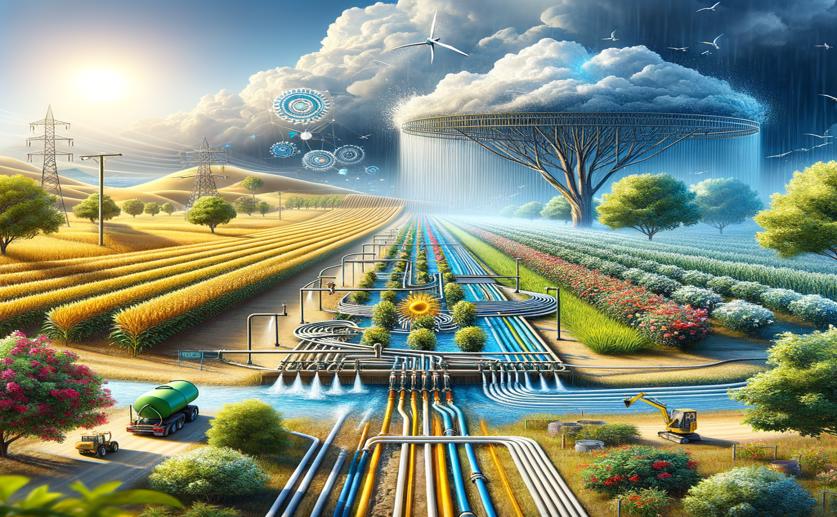
Optimal Water Use for Crops and Irrigation Planning in a Changing Climate
Jim Crocker
28th May, 2024

Image Source: Natural Science News, 2024
Key Findings
- The study in the Lower Kulfo Catchment of southern Ethiopia found that crops will need more water in the future due to higher temperatures and altered precipitation patterns
- Average reference evapotranspiration is projected to increase by 11.9% for 2030-2050 and by 16.2% for 2060-2080 compared to 2010-2022
- Farmers will need to irrigate more frequently, with irrigation intervals shortening from 8 days to 7 days and 5 days in future scenarios
AgricultureEnvironmentSustainability
References
Main Study
1) Crop water requirement and irrigation scheduling under climate change scenario, and optimal cropland allocation in lower kulfo catchment.
Published 30th May, 2024 (future Journal edition)
https://doi.org/10.1016/j.heliyon.2024.e31332
Related Studies
2) Assessment of soil mulching field management, and deficit irrigation effect on productivity of watermelon varieties, and AquaCrop model validation.
3) Effect of furrow irrigation systems and irrigation levels on maize agronomy and water use efficiency in Arba Minch, Southern, Ethiopia.
4) Impact of climate change on agriculture and adaptation strategies in Ethiopia: A meta-analysis.



 21st April, 2024 | Greg Howard
21st April, 2024 | Greg Howard